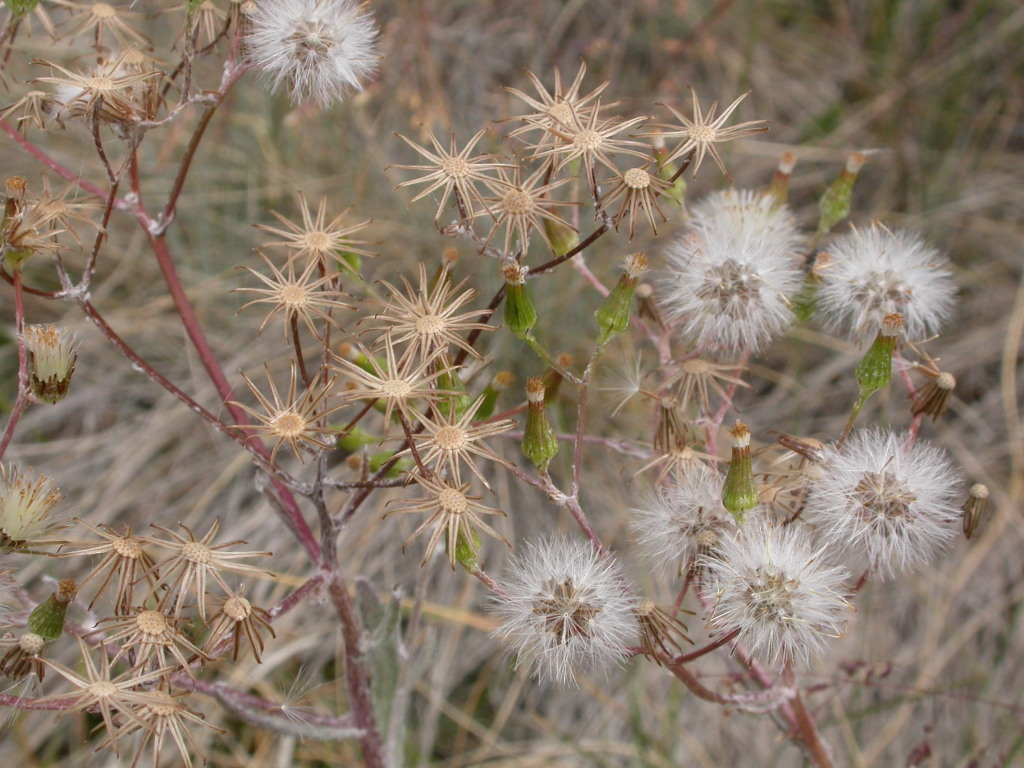Senecio gunnii
(Hook.f.) BelcherErect perennial herb, often shortly rhizomatous, 30–100 cm high, greyish from a dense cottony tomentum, rarely the older growth glabrescent. Leaves sessile or pseudopetiolate, rarely auriculate, obovate, elliptic or oblanceolate (the uppermost narrower), 4–12 cm long, 8–25 mm wide, margins regularly shallowly dentate, or the uppermost (rarely all) entire; at least the lower surface greyish with dense cobwebbed hairs, upper surface sometimes glabrescent. Inflorescence corymbose, usually 3–15 cm across, comprising c. 50–200 capitula; capitula non-radiate; involucre cylindric, 5.5–7.5 mm long, whitish-cobwebbed in lower half; bracts 11–13; bracteoles present; florets c. 25–40, c. 70 % female. Cypselas cylindric, 2–3 mm long, red-brown or greenish, broadly ribbed, glabrous or sparsely and minutely papillose-hairy in intervening grooves; pappus of slender hairs 5–6 mm long, deciduous Flowers Dec.–Mar.
GipP, CVU, EGU, HSF, HNF, MonT, VAlp. Also NSW, Tas. Common in montane forest, subalpine woodland and alpine herbfield and grassland.
Walsh, N.G. (1999). Senecio. In: Walsh, N.G.; Entwisle, T.J., Flora of Victoria Vol. 4, Cornaceae to Asteraceae, pp. 941–965. Inkata Press, Melbourne.
 Spinning
Spinning

